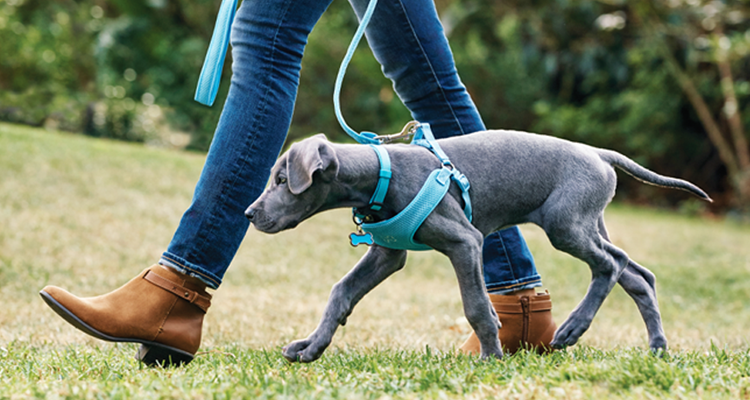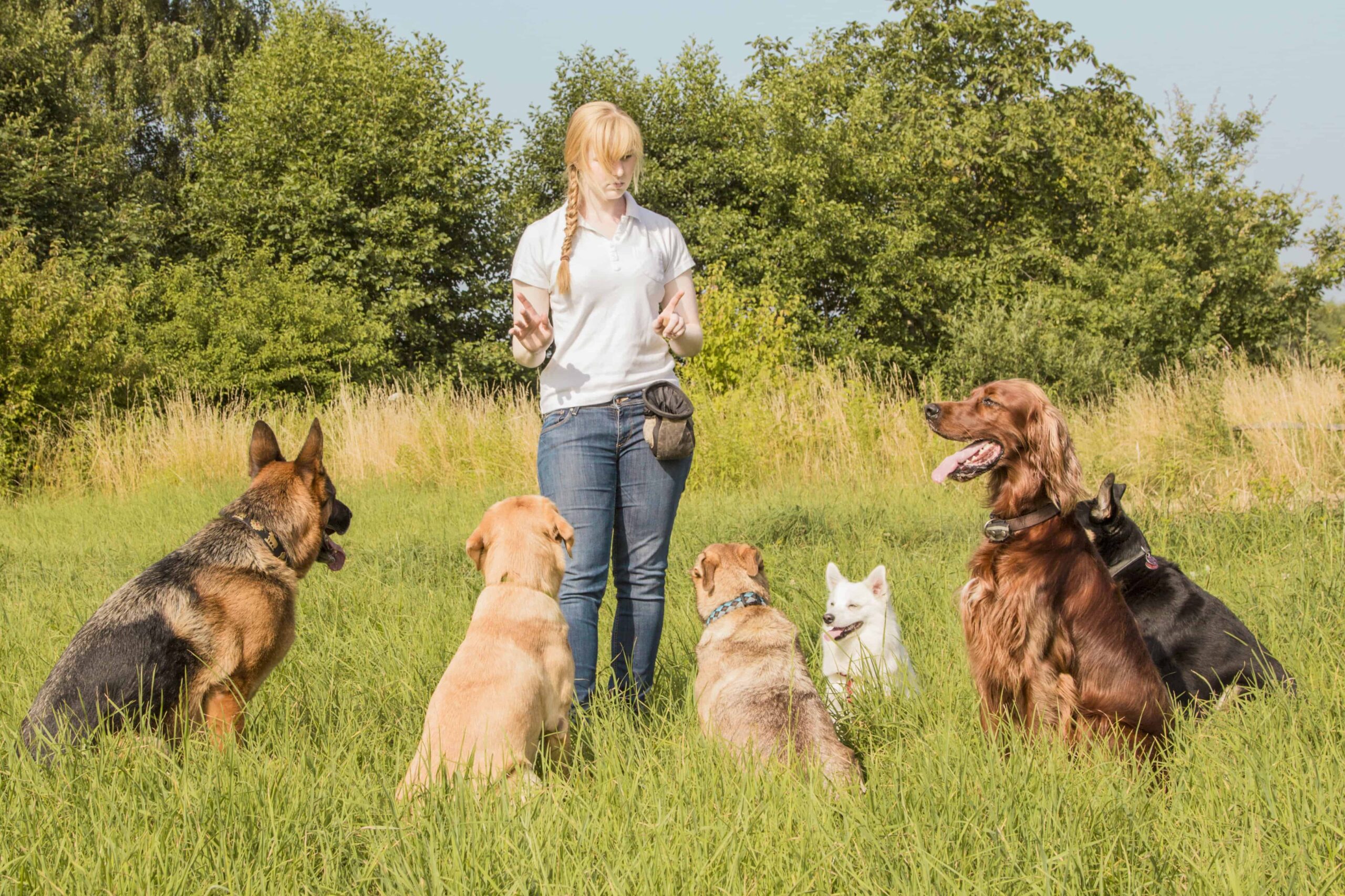Why Consistency is Key in Dog Training for Long-Term Success
Why Consistency is Key in Dog Training for Long-Term Success
Blog Article
Newbie's Guide to Effective Dog Training at Home
Successfully training a pet in the house requires a nuanced understanding of canine actions and effective communication methods. Establishing clear training goals, using top notch incentives, and maintaining uniformity throughout member of the family are essential components. Integrating training right into everyday routines can boost both engagement and retention. Several novice instructors come across difficulties that may hinder development. To browse these complexities effectively, it's important to explore a number of vital aspects that can change your method and cause a harmonious partnership with your pet. What basic principles should every newbie understanding to make sure success?
Comprehending Canine Behavior
Understanding pet behavior is important for reliable training and cultivating a harmonious partnership in between human beings and their canine companions. Pets connect mainly through body movement, vocalizations, and face expressions, making it essential for proprietors to translate these signals accurately. Recognizing actions such as tail wagging, grumbling, or shrinking can provide insights into a canine's mood and intentions.

Typical behavior issues, such as hostility, anxiousness, or too much barking, commonly stem from misunderstandings or unmet demands. Observing and attending to these issues without delay can protect against escalation and make certain a positive training experience. By fostering a deep understanding of pet dog actions, owners can customize their training approaches to fit their canine buddies, ultimately resulting in a mannerly and happy pet.
Essential Educating Devices
A well-appointed training area can dramatically improve the performance of pet dog training in the house. Important training devices make sure that both the dog and the trainer can participate in efficient sessions that promote discovering and bonding.

Purchasing a strong chain and a comfortable, well-fitting collar or harness is vital for safety and control. These devices assist develop boundaries and make certain the canine stays safe and secure during training. Additionally, a marked training location, without diversions, help concentration for both the fitness instructor and the pet.
Educating help such as training pads, cones, or agility tools can likewise boost the experience by presenting range and challenges. Having a notebook or digital application for tracking progress can be indispensable, enabling you to keep in mind successes and locations for renovation. Utilizing these important tools will certainly produce a positive training setting and lay the foundation for effective learning.
Producing an Educating Regimen
Developing a regular training routine is important for reliable canine training in your home. A well-structured regular not just aids in reinforcing preferred behaviors yet also provides your pet dog with a sense of security and predictability. To produce an effective training regular, begin by recognizing details training objectives, such as basic commands, leash walking, or housebreaking.
Choose a marked time each day for training sessions, preferably when your pet dog is responsive and alert. Sessions should be short, about content 5 to 15 minutes, to preserve emphasis and protect against fatigue. Consistency in timing and atmosphere will improve your pet dog's learning experience.
Include training into day-to-day tasks to reinforce abilities. Method commands during strolls or nourishment, which incorporates finding out right into all-natural routines. In addition, stay flexible and readjust the routine as essential, accommodating your dog's energy levels and mood.
Favorable Reinforcement Techniques
Favorable reinforcement strategies are fundamental to reliable pet dog training, promoting wanted actions with rewards rather than penalty. This method utilizes positive stimuli, such as treats, praise, or play, to urge pet dogs to repeat details actions. The foundation of this method is timing; rewards should be provided right away following the wanted actions to create a clear association.
When executing favorable support, it is vital to choose rewards that are inspiring for your pet dog. High-value treats, such as small pieces of hen or cheese, can be particularly efficient throughout training sessions. In addition, differing the incentives can preserve your dog's passion and enthusiasm.
Beginning with simple commands, like "rest" or "remain," and progressively progress to much more complicated tasks. Consistency is crucial; make sure that all member of the family utilize the same commands and benefit systems to avoid confusion.
Additionally, it is important to continue to be person and avoid disappointment. Pets, like humans, learn at their own pace. By promoting a helpful training setting with positive support, you can boost your pet's discovering experience while reinforcing the bond between you and your furry companion, laying the groundwork for effective training outcomes.
Typical Educating Challenges
While training a pet dog read this article in your home can be a rewarding experience, it usually includes a collection of usual challenges that can examine both persistence and consistency. One common concern is disturbance. Pet dogs may come to be conveniently averted by sounds, motions, and even aromas in their atmosphere, making it difficult to preserve their focus throughout training sessions.
An additional challenge is inconsistency in commands and support. If household members use various cues or benefits, it can confuse the pet and impede progression. Developing a unified method is essential for effective communication.
In addition, pets can experience irritation or stress, specifically if they do not recognize what is expected of them. This can bring about unfavorable behaviors, such as chewing or barking.
Ultimately, the timing of support is essential (Dog training). Postponed benefits can decrease the effectiveness of favorable reinforcement, as dogs may fail to attach the habits with the benefit
Overcoming these difficulties requires commitment, clear interaction, and a structured training plan. Acknowledging and attending to these common barriers will lead the way for a more delightful and successful training experience in your home.
Final Thought
In verdict, successful pet training at home necessitates a comprehensive understanding of canine actions and efficient communication approaches. By developing clear training goals and utilizing high-grade treats alongside favorable reinforcement, the training procedure becomes a lot more gratifying for both the fitness instructor and the dog.
Developing a regular training regimen is vital for effective pet go to my blog dog training at home.Favorable reinforcement methods are basic to reliable canine training, promoting desired habits via rewards rather than penalty (Dog training). By fostering a supportive training environment with favorable support, you can improve your canine's knowing experience while strengthening the bond in between you and your fuzzy buddy, laying the groundwork for successful training results
In conclusion, effective dog training at home demands a comprehensive understanding of canine actions and effective communication methods. By establishing clear training objectives and utilizing top notch deals with alongside positive reinforcement, the training process becomes extra rewarding for both the instructor and the dog.
Report this page